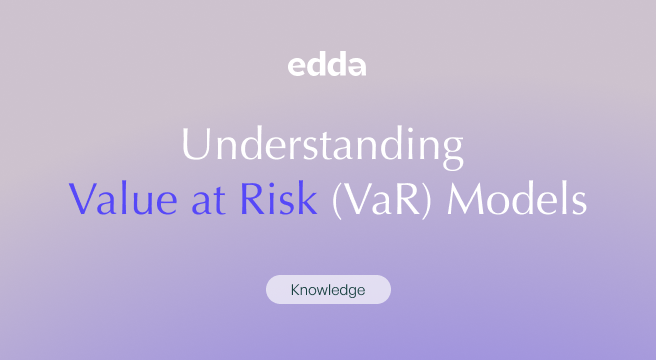In this article, we revisit Fred Wilson and Union Square Ventures’ decision to not invest in Airbnb, a choice that stands as a notable lesson in venture capital. The decision, influenced by conventional evaluation approaches and a potential misreading of market trends, led to missing a significant opportunity in the tech sector.
We highlight the broader impact of this decision in venture capital, stressing the need for adaptability to innovative business models and shifts in consumer preferences. We also explore how tools like Edda’s dealflow software can aid investors in complex decision-making, helping identify and capitalize on new market opportunities.
Airbnb: A Missed Opportunity
In the realm of venture capital where predicting the future is as vital as the investment itself, the story of Fred Wilson and Union Square Ventures passing on Airbnb stands out as a significant missed opportunity.
When Airbnb, then a new enterprise, sought financial support to transform its groundbreaking concept into a successful business, it approached Union Square Ventures, renowned for insightful investments in technology.
Airbnb’s idea, now synonymous with transforming the accommodation industry, was at that time an innovative venture – converting regular homes into temporary places for travelers. This concept diverged greatly from the conventional hotel industry path. This innovation presented a challenge for investors like Wilson and his team: the potential scalability of such a unique business model.
At this decision point, Wilson and Union Square Ventures faced a challenging judgment. This wasn’t just about funding a company; it was about predicting the trajectory of an entire industry. Regrettably, their assessment criteria at the time were aligned more with traditional standards and perceived constraints.
Questions arose: Would people be comfortable letting strangers into their homes? How would this model compete with established hotels?
These concerns, coupled with a possible underestimation of changing consumer behaviors, led Wilson and his team to decide against investing. They could not fully visualize the massive impact Airbnb would have on the accommodation sector.
It was a decision that reflected the inherent risks and uncertainties in venture capital, especially when assessing the future prospects of early-stage companies with novel business models.
As Airbnb grew into a major enterprise, the decision by Fred Wilson and Union Square Ventures became a notable example of how challenging it is to predict the success of innovative and unconventional business ideas.
Reflecting on Airbnb: A Cautionary Tale
The decision by Fred Wilson and Union Square Ventures to pass on Airbnb had significant consequences, both for the venture firm and the broader venture capital community. For Union Square Ventures and Fred Wilson, it represented a missed opportunity to be part of one of the most successful and transformative startups in the technology sector.
Airbnb’s meteoric rise to becoming a major player in the global travel and accommodation industry, valued at billions of dollars, highlighted what could have been a highly profitable investment for the firm.
This decision also served as a learning point within venture capital about the challenges of predicting the success of disruptive business models. The Airbnb case is often cited as an example of the need for venture capitalists to balance risk assessment with the ability to envision the growth potential of unconventional ideas.
Furthermore, it provided a clear illustration of the high-risk, high-reward nature of venture capital investing. Missing out on Airbnb didn’t just mean a loss of potential financial gains; it also meant foregoing the chance to be part of a company that redefined an industry and altered consumer behaviors worldwide.
This experience likely influenced Union Square Ventures’ future investment strategies, emphasizing a more open approach to innovative and potentially disruptive business models.
What Investors Can Learn from Airbnb
The Airbnb investment scenario involving Fred Wilson and Union Square Ventures offers many lessons for investors. Central to these is the importance of embracing disruptive innovation and shifts in consumer behavior.
Airbnb’s success hinged on its novel accommodation model and tapping into the desire for authentic experiences, illustrating the need for investors to stay attuned to such evolving consumer trends. This requires not only a keen observation of market shifts but also active engagement with emerging technologies and startup ecosystems. Utilizing analytical tools like CB Insights for sector monitoring and immersing oneself in VC accelerators can provide valuable insights.
Moreover, there’s a critical balance to be struck between traditional risk assessment and the vision for long-term industry transformation. Investors must analyze immediate risks, like financial stability and market competition, while also envisaging how a startup’s unique proposition could potentially reshape industry norms in the years to come. Investment decisions should be grounded in current market realities but also consider the prospective long-term impact and growth of new ideas.
Flexibility in investment criteria is another key takeaway. Including unconventional business models in an investment portfolio opens doors to new, profitable opportunities. This flexibility should be complemented by building a broad network and acquiring deep industry insights, which aid in recognizing and capitalizing on emerging trends in venture capital.
Lastly, the dynamic nature of venture capital demands adaptability and learning from past decisions. The Airbnb case underscores the value of reflecting on missed opportunities to refine and evolve future investment strategies.
Altogether, these lessons highlight the necessity for a holistic, forward-thinking approach in venture capital, where openness to innovation, strategic risk management, and adaptability are pivotal in navigating innovation and entrepreneurship.
Edda: Revolutionizing Venture Capital Decision-Making
Edda’s VC app presents itself as an essential tool for modern investors aiming to navigate the complexities of venture capital and avoid missed opportunities like the Airbnb case. Edda’s venture capital portfolio management software offers several ways for investors to stay ahead in a dynamic market:
- Staying Ahead of Market Trends: Edda’s deal flow CRM is designed to keep investors aligned with current market trends and consumer behaviors. By leveraging Edda’s in-depth analysis of data from various sources, investors can gain insights into emerging technologies and shifts in consumer preferences. This understanding is crucial in recognizing and evaluating the potential of innovative business models.
- Balancing Immediate Risks with Long-term Opportunities: Through Edda’s portfolio management tools and dealmaking insights, investors can perform a nuanced assessment of both immediate risks and long-term potential. This balanced approach is vital in making informed decisions, especially when considering startups with groundbreaking ideas that may initially seem high-risk.
- Adopting Flexible Investment Criteria: Edda’s venture capital software facilitates the management of a range of business models, enabling investors to broaden their investment criteria. Its relationship intelligence and industry insights tools help in identifying and capitalizing on unique investment opportunities that may not fit traditional models but offer significant potential.
- Adapting to On-going Developments: Edda’s real-time data updates and analytical capabilities allow investors to continuously refine their strategies and learn from ongoing market developments. This adaptability is imperative for staying relevant and successful in the investment realm.
- Enhanced Decision-Making with Comprehensive Data: Edda’s integration with data-rich platforms like PitchBook enriches its functionality, providing users with extensive private market data. This integration helps in making more informed investment decisions, reducing the likelihood of overlooking promising ventures.
By incorporating Edda’s venture capital CRM into their investment process, firms can benefit from a more data-driven approach to deal flow management, enhancing their ability to identify, evaluate, and capitalize on promising investment opportunities. In doing so, investors equip themselves with the tools and insights necessary to navigate the complex and opportunity-rich world of venture capital effectively.









